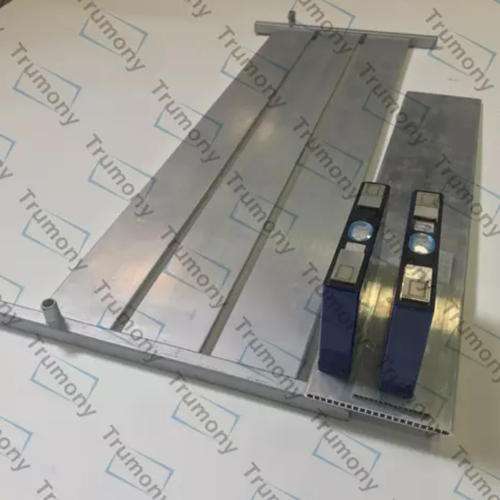A battery liquid cold plate is a cooling device that absorbs the heat generated by the battery pack and dissipates it through liquid circulation. Unlike traditional air cooling solutions, liquid cooling systems can provide more efficient thermal management, especially in high-power, high-energy-density battery applications. Liquid-cooled cold plates are usually made of metal or composite materials, and coolant flows through multiple channels on their surface to exchange heat with the heat source of the battery pack and keep the battery working within the optimal temperature range.
Working Principle of Battery Liquid Cold Plate
The working principle of liquid cold plates is based on the heat exchange properties of liquids. The coolant (usually a water-based solution or a special coolant) flows through the channels inside the cold plate to take away the heat generated by the battery cells or modules. After the coolant undergoes heat exchange, the hot liquid is guided to the radiator or heat exchange unit through a pumping system, where the heat is dissipated. During this process, the coolant will continue to circulate to ensure that the temperature of the battery system is stable.
Advantages of Battery Liquid Cold Plates
1. Efficient heat dissipation
The thermal conductivity of the liquid cooling system is much better than that of the air cooling system, and it can achieve higher heat dissipation efficiency with a smaller volume and weight. This is especially important for high-power batteries (such as electric vehicle batteries).
2. Precise temperature control
Battery liquid cooling cold plates can provide more uniform temperature distribution, effectively avoid battery hot spots, and improve the overall stability of the system.
3. Space optimization
Liquid cooling cold plates are relatively compact in design and do not require too much space. They can integrate cooling functions inside battery modules or battery packs, avoiding the cumbersome external heat dissipation devices.
4. Extend battery life
By maintaining the operating temperature of the battery within the ideal range, the liquid cooling system can reduce the risk of overheating and reduce the battery attenuation rate, thereby extending the battery life.
5. Low noise
Compared with traditional air cooling systems, liquid cooling cold plates have almost no noise pollution, which is especially important for devices that need to run quietly.
In general, battery liquid cooling cold plates, as an efficient and precise heat dissipation solution, have been widely used in many fields and play an increasingly important role in future battery technology and energy management systems.

